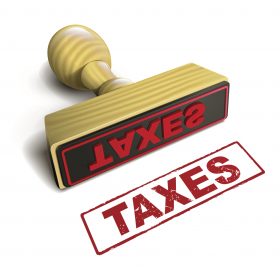
The Protecting Americans from Tax Hikes Act (often referred to as the PATH Act) was passed in December 2015. The act eliminates a lot of the uncertainty inherent in tax planning by enhancing and making permanent several key tax provisions that previously had been renewed by Congress on an ad hoc basis. Unfortunately, the provisions were extended so late in 2015 that most businesses were unable to plan significant investment or long-term purchases to take full advantage in their 2015 filings. Your tax professional can advise you on your specific situation, but here are some key components that could affect your tax planning during 2016.
- More businesses will be eligible for the existing research and development (R&D) credit, which PATH also makes permanent. Startups with less than $5 million in gross receipts (and very little profit) previously were ineligible for the R&D credit. Now, some small firms that fall below the $5 million level may be able to apply the credit to the Social Security portion of their payroll taxes up to a limit of $250,000. Application of this credit has been broadened to include more business sectors. Previously, technology and scientific companies were the only beneficiaries of R&D write-offs.
- Changes to Section 179 in the Tax Code may bring the most welcome change to the small business sector. In recent years, owners of small firms were able to write off up to $500,000 spent on new or used equipment and software. However, that write-off was cut to $25,000 for the 2014 tax year. PATH has restored the write-off to its previous $500,000 limit and has made the provision permanent. This might be the most impactful change in the mix. These deductions involve business-related purchases across the board – not just computers and software, but desks, lamps and most day-to-day equipment used by a company’s employees.
- However, business owners do need to be mindful when it comes to applying Section 179 to automobiles and other vehicles. To qualify for a tax deduction, a passenger car must be used more than 50 percent for business purposes. For most cars, the first-year deduction is capped at $3,160 with an additional $200 for SUVs and pickup trucks. Some vehicles may also qualify for $8,000 in potential bonus depreciation. If they use larger business vehicles (6,000 to 14,000 pounds), some business owners may be able to deduct up to $25,000 plus a possible 50 percent in depreciation.
- The IRS has simplified the way small businesses may expense tangible goods. For quite some time, small businesses were allowed to write off equipment costs of up to $500, rather than carrying them as depreciating assets on their balance sheets. For the 2016 tax year, the IRS will increase the maximum deduction to $2,500. These write-offs must be supported by invoices.
- On the other hand, penalties for self-employed workers or entrepreneurs who lack essential health benefits will continue to increase. Families without coverage will see the sharpest increases.
The recent changes could affect and benefit your business. Consult your tax professional to find out more.